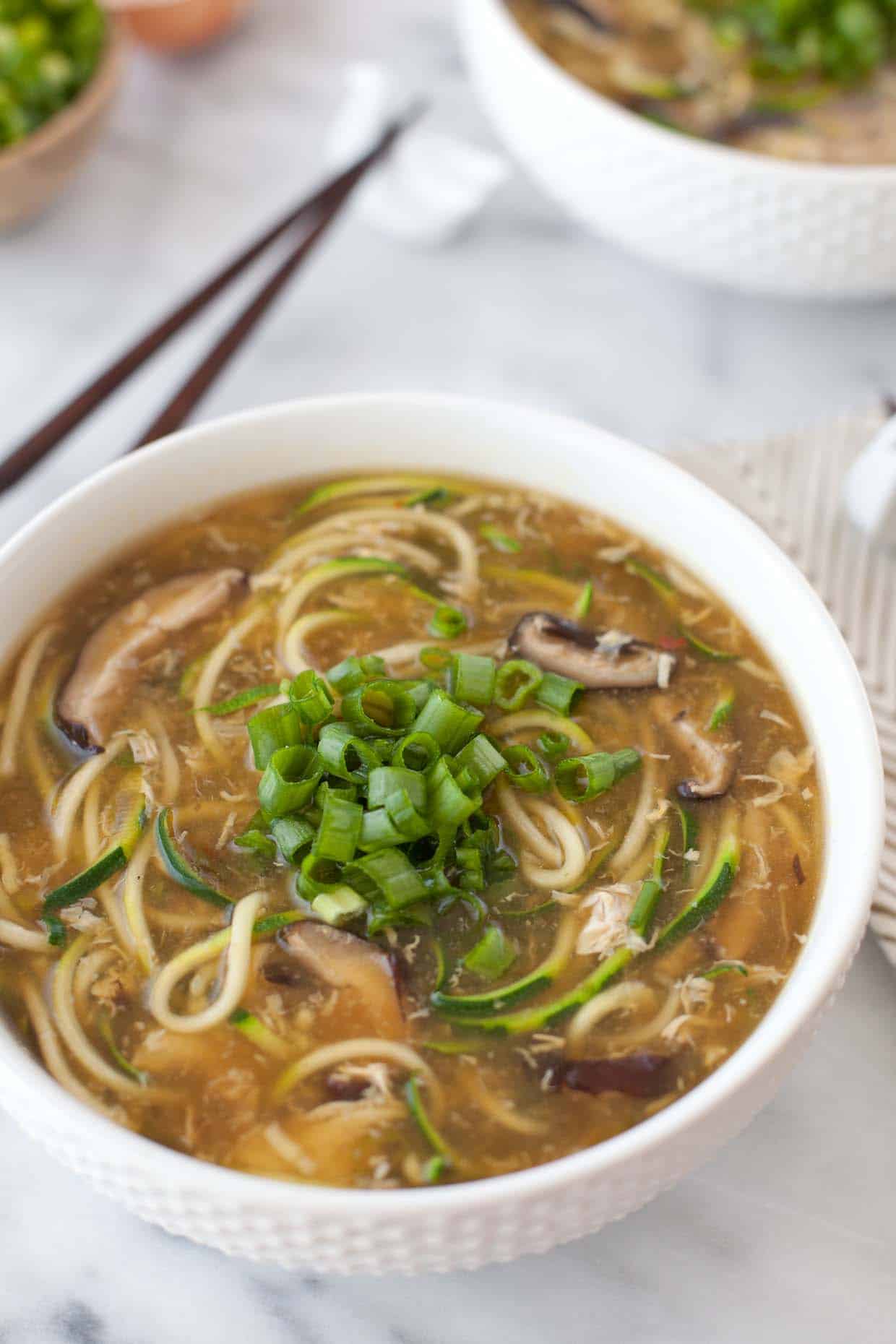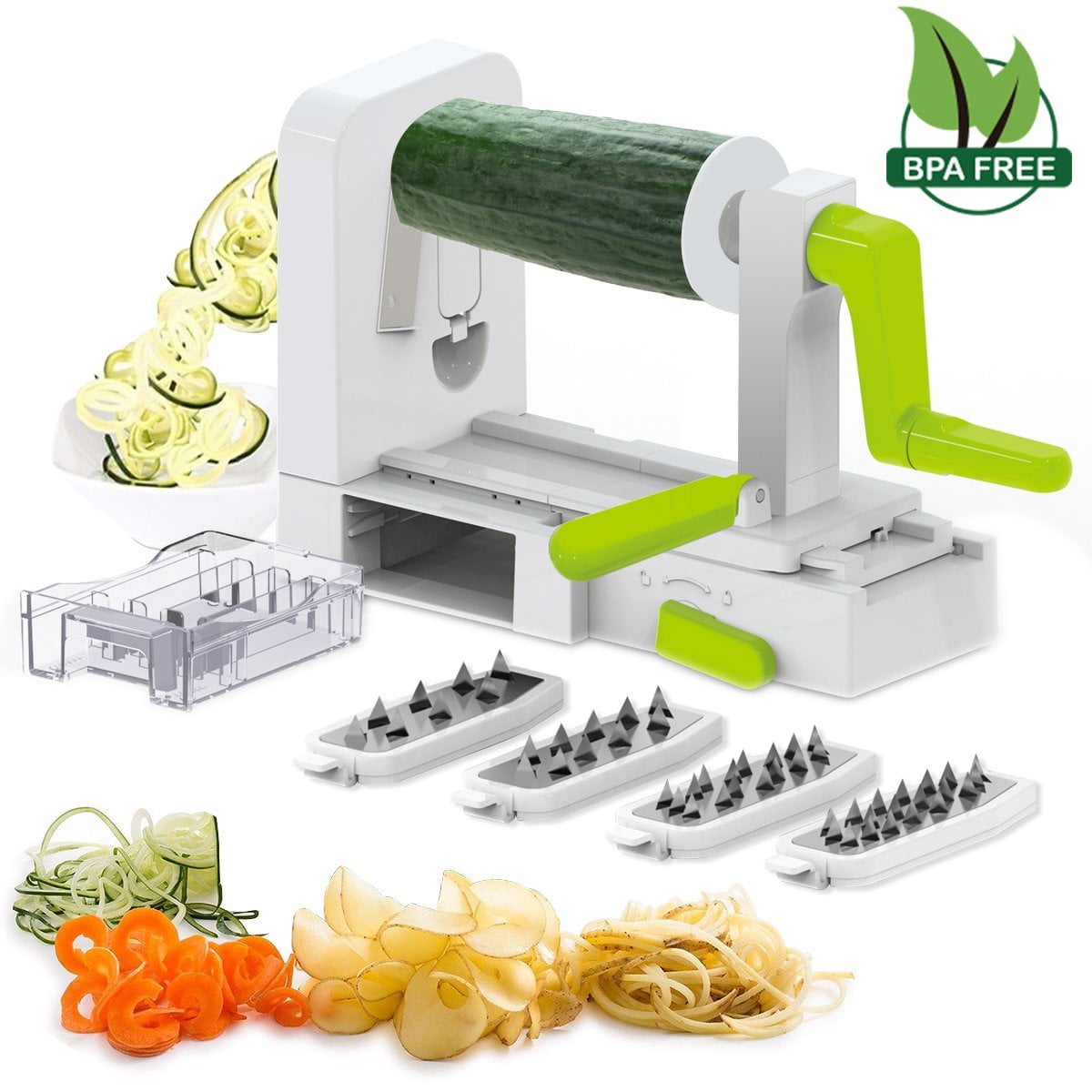

If you have an excess of kitchen space and love eating zoodles, buying an appliance specifically for making them might be a good idea for you. Then, simply skewer the vegetable your choice on the included metal spoke (this part's a bit violent but necessary) and turn on the machine for noddles that come out perfectly. Once you've placed the attachment on your KitchenAid, choose whether you want your noodles to be medium, fine, or extra fine. Kitchen Aid's spiralizing attachment will cost you a pretty penny, but will save you a whole lot of time and frustration. If you cannot be bothered with cranking your zoodles by hand (it me) and you own a KitchenAid, you are in luck, my friend.


The one pictured above allows you to select from three shapes for your noodles, then you simply twist the zucchini through the processor to yield a beautiful pile of green noodles. Handheld spiralizers come in many different designs, but many of them are just glorified vegetable peelers (and you know better than to fall for one of those).
Zoodles clothing how to#
Here's a quick rundown of your options, along with instructions on how to use each tool. Because they come at varying price points, you'll want to decide how committed you really are to this whole spiralizing thing. There are all sorts of gadgets and gizmos out there to help you transform an unexceptional zucchini (or carrot, beet, parsnip, or veggie of your choice) into noodle-esque shapes. The three best methods for how to make zoodles Method 1: use a hand spiralizer, Stand Mixer attachment, or spiralizing machine Check out all the ways to spiralize, properly cook, and serve zoodles for veggie-forward dinners. Luckily, Knox has a few smart fixes for serving zoodles that aren't sweating in their own water (bleh!). "Zucchini is more than 90 percent water, making it a challenge when trying to cook zoodles and avoid sogginess," says Jen Knox, executive chef for Green Bar & Kitchen, a plant-based restaurant located in Fort Lauderdale, Florida.


 0 kommentar(er)
0 kommentar(er)
